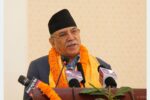Human resource refers to those humans who have general and technical ability to accomplish the task (work) in hand. Humans become resource when they are useful for an organization, community or a nation.
Human resource is also referred to as human capital, workforce, labor force, talent pool, manpower in different contexts and in different situations. Human resource as per their skills, qualifications and experience work in different enterprises and organizations to produce goods and services.
As a whole, their talents and experiences make a labor market and strengthen an economy at regional, national and global levels. Except for the children, everybody is the part of human resource when his or her positive contributions are fruitful for human society.
A country requires all kinds of workforce to do different kinds of work. However, greater the numbers of skilled workforce, better it is for the economy and overall development of a country.
Workforce (Labor Force): Understanding the Types
The workforce or labor force consists of all the people who are able to work and are engaged in or available for work, either in a country or area or in a particular company or industry. These human resources with varying levels of skills and experience contribute to the development of the organization, society and finally a nation.
A country requires all kinds of workforce to do different kinds of work. However, greater the numbers of skilled workforce, better it is for the economy and overall development of a country.
Based on their skill level, the workforce is categorized into the following three broad categories:
Unskilled workforce: Unskilled workforce is not properly trained and does not have specific skill. But they are needed for manual and other works. They contribute to the development of a country. Gatekeepers, manual-laborers, peons, cleaners, water-men, cart and rickshaw-pullers and coolie are examples of the unskilled workforce.
Semi-skilled workforce: Semi-skilled workforce are trained but are not experts. Semi-skilled workforce contributes as mechanic, plumbers, carpenters, motor-drivers, crane-operators, technicians, electricians, cook, waiters, bookbinders, barbers, cobblers and others.
Skilled workforce: Skilled workforce is experts in the areas of work. They are highly trained and knowledgeable. Skilled workforce performs highly complex and technical works. Examples of skilled workforce are teachers, engineers, doctors, nurses, scientists, managers, and others.
Based on the duration of time, the workforce has been divided into the following three categories:
1. Short-term Workforce: Short-term workforce perform specific task lasting for a short time period. They are trained and oriented to complete short-term tasks such as conducting a survey, taking feedback in the market or for government, workers in the tea-garden and laborers in the farmland, farmers working during sowing and harvesting time.
Skilled workers are experts in their respective fields of work and in due course of time turns out to be a sustainable workforce by dint of their continuous training, increasing skill level and unmatched experience.
2. Long-term Workforce: Long-term workforce work for a long period of time. Those who are working in service sectors like education and health-care, army, police are examples of the long-term workforce.
3. Sustainable Workforce: Sustainable workforce continue to work throughout life in their areas of work after acquiring skill and knowledge. Doctors, teachers, scientists, singers, artists, journalists, and writers are some examples of a sustainable workforce. Sustainable workforce contributes to the development of infrastructure, setting up industries, operating big projects within the country.
Why do we need skilled workers in the present-day economy? As we know that sustainable workforce cannot be created unless an economy has a vast pool of skilled workers. Skilled workers are experts in their respective fields of work and in due course of time metamorphosed into a sustainable workforce by dint of their continuous training, increasing skill level and unmatched experience.
They begin to train others under their supervision and this is how a chain reaction of producing skilled labor force starts off to improve the status of the economy and ameliorate the social and economic status of people in a society.
This is why no economy can succeed in the absence of skilled workers, no polity will bring social justice unless development takes place in a society as a result of contributions made by the skilled workers and no community can ever stand on its own strength unless a pool of skilled workers create enough number of enterprises to absorb the remaining workforce in it.
Scientific development, inventions, innovation, social engineering, establishing enterprises, businesses, and organizations for social and economic development, infrastructural development in healthcare, education, and others are possible only if skilled workers take up the leadership roles in a country.
Poverty continues to haunt society if skilled workers do not come forward to become entrepreneurs and create opportunities for other semi-skilled and unskilled workers to work and earn a livelihood.
Therefore, no government can ever dream to develop a country without creating a base for nurturing a vast pool of skilled workforce and arrange for their continuous training in order to have the long-term positive effects on both economies as well as society.
The classic case of Nepal – a least developed country is that out of half a million workforce that it produces annually, 4.4 million of it migrates to other countries in foreign employment.
Of all the migrant workers from Nepal, 74.5% of them are unskilled workers. Only 1.5% of them are skilled in their jobs. Isn’t it a situation of ‘caught between the devil and deep-blue sea’ to which psychologists refer to ‘avoidance-avoidance conflict’.
Government of Nepal has trapped itself in a situation where there is no other option at present except to allow the unskilled workforce of the country to go outside in foreign employment because there is no strength in the domestic economy to employ them gainfully.
In avoidance-avoidance conflict, both the available options are negative in nature which force a person to choose less harmful of the twos.
Same way, the government cannot ask the migrant workers to stay back in Nepal because there is no enough money in terms of wage or salary earned every month to enable them to meet the essential needs of their family (of at least 5 members). Allowing them to go in foreign employment further invite troubles related with their physical and psychological torture, long stay in a foreign land away from their family and community, cases of suicides, sickness, and accidents among others.
Both the options are negative in nature and hence the government has chosen the less harmful one that is sending the Nepalese workers away in foreign employment. Is there no way to come out of this trap? Yes, there is a way where the government must reverse the trend of nature of workforce by producing more than two-thirds of the total workforce as skilled workers and the rest as semi-skilled workers.
Community schools must be changed into a hub of skill training centers by employing the trainers and pragmatic educators instead of the vast pool of rent-seekers who work more as political workers and less as teachers and trainers.
Promotion of entrepreneurship all across the country is the next step which will help generate the capital and set up the production units to manufacture goods and render various kinds of services.
Human resource is most effective when it combines the mix of skilled and well-trained workers together with the semi-skilled labor force. The success of any economy depends upon the training and proper management of the skilled workforce in a country as well as within an organization.
Skill development enhances the capacity of a person and his/her opportunity to get a promotion, hike in salary and recognition at the workplace besides offering more scope for creativity and job satisfaction. The following are reasons why a country needs to pay attention to the management and continuous training of skilled workers:
Skilled workers are a necessity, not a luxury. A global market has become the reality of the present-day economy which is linked up with the domestic economy of a country. In this way, all the countries of the world are connected with each other through a global market.
Skilled workforce plays the role here to strengthen the national domestic economy to be part of a competitive global economy because skilled workers are knowledge-seekers and hence efficient in their performance.
Skilled workers are motivated, educated and keen learners to understand the complexities and trends of modern technology as well as the management system. They keep track of the quality of produced goods and services according to the demands of the market.
Skilled workers are trendsetters, inventors, innovators, good managers and have the ability to improve upon the things to compete with others in the market at the national and global level.
Views expressed in this article are the author’s own and do not necessarily reflect the stance of Khabarhub.








Comment